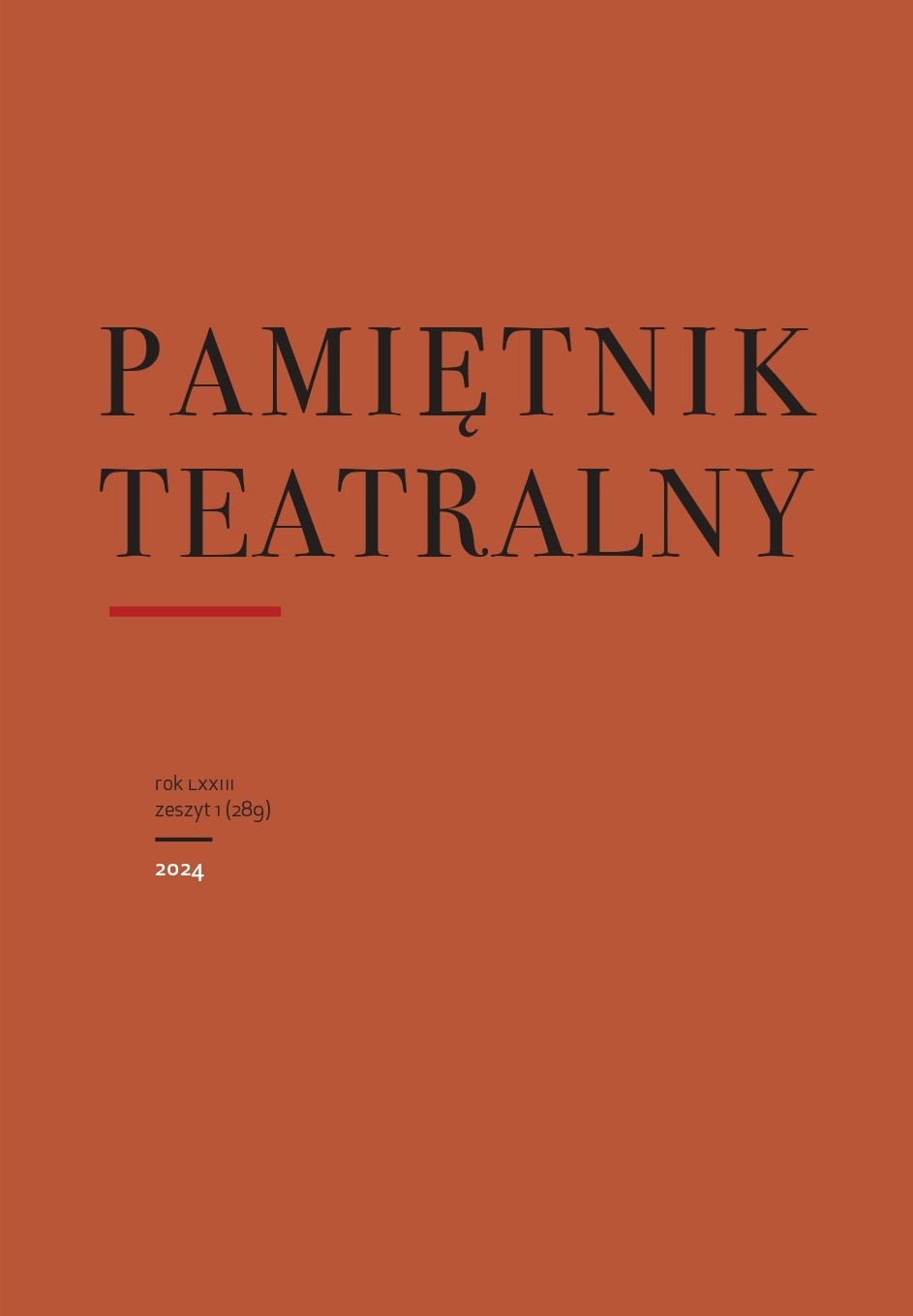A Porcelain Harlequinade
Zbigniew Raszewski
Institute of Art, Polish Academy of Sciences (Poland)
Abstract
This article discusses the development of research into the presence of commedia dell’arte in Poland and its influence on Polish theater. The author polemically engages with the work of scholars of the Polish Enlightenment. He argues that research on the origins of professional theater in Poland has neglected the traditions of the Saxon period (1697–1763), notably those connected with commedia dell’arte. He emphasizes the importance of performances by masters of this genre, such as Angelo Constantini or Cesare D’Arbes, in the first half of the 18th century, as an important part of the history of theater in Poland and its links with the history of European theater. In this context, he draws attention to the valuable contributions by Mieczysław Brahmer, Bohdan Korzeniewski, and Barbara Król, who researched this topic. He also proposes to include iconographic material as a research source, especially the famous porcelain figurines from the Meissen workshop of Johann Joachim Kändler (1706–1775), which depict 18th-century Italian comedians. The author counters Sacheverell Sitwell’s claim that these figures were modelled on Dresden fair theater actors. He stresses that one ought to be very cautious in ascribing documentary value to the Meissen figures, as they were already proven to have been largely modelled on François Joullaine’s engravings illustrating Luigi Riccoboni’s Histoire du theatre italien. However, he posits that some of them were modelled on the famous roles of Italian comedy masters who performed at the House of Wettin courts in Dresden and Warsaw.
Keywords:
commedia dell’arte, theater documentation, theater iconography, theater in Poland 1700-1800References
Attinger, Gustave. L'esprit de la commedia dell'arte dans le théâtre français. Paris: Librairie théâtrale, 1950.
Google Scholar
Brahmer, Mieczysław. „La Commedia dell’arte in Polonia”. Ricerche Slavistiche 3 (1954): 184–195.
Google Scholar
Honey, William Bowyer. European ceramic art: From the end of the Middle Ages to about 1815. London: Book Collectors Society, 1952.
Google Scholar
Mooser, Robert-Aloys. Opéras, intermezzos, ballets, cantates, oratorios joués en Russie durant le XVIII siècle. Genève: R. Kister, 1955.
Google Scholar
Pechmann, Günther von. Franz Anton Bustelli: Die italienische Komödie in Porzellan. Berlin: Verlag Gebr. Mann, 1947. https://doi.org/10.11588/diglit.61770.
Google Scholar
Sitwell, Sacheverell. Theatrical Figures in Porcelain: German 18th Century. London: Curtain Press 1949.
Google Scholar
Authors
Zbigniew RaszewskiInstitute of Art, Polish Academy of Sciences Poland
Zbigniew Raszewski (1925-1992) - historyk teatru, współtwórca wiedzy o teatrze jako dysycpliny naukowej, profesor Instytutu Sztuki PAN i warszawskiej szkoły teatralnej (dziś: Akademia Teatralna im. Aleksandra Zelwerowicza), wieloletni redaktor "Pamiętnika Teatralnego". Jego obszerny biogram można znaleźć w ETP: https://encyklopediateatru.pl/osoby/9502/zbigniew-raszewski.
Statistics
Abstract views: 330PDF downloads: 205
License
Copyright (c) 1957 Zbigniew Raszewski

This work is licensed under a Creative Commons Attribution 4.0 International License.
The author grants a royalty-free nonexclusive license (CC BY 4.0) to use the article in Pamiętnik Teatralny, retains full copyright, and agrees to identify the work as first having been published in Pamiętnik Teatralny should it be published or used again (download licence agreement). By submitting an article the author agrees to make it available under CC BY 4.0 license.
From issue 1/2018 to 3/2022 all articles were published under a Creative Commons license CC BY-NC-ND 4.0. During this period the authors granted a royalty-free nonexclusive license (CC BY-ND 4.0) to use their article in Pamiętnik Teatralny, retained full copyright, and agreed to identify the work as first having been published in our journal should it be published or used again.
Most read articles by the same author(s)
- Zbigniew Raszewski, Theater Documentation Past and Present , Pamiętnik Teatralny: Vol. 40 No. 2 (1991)









